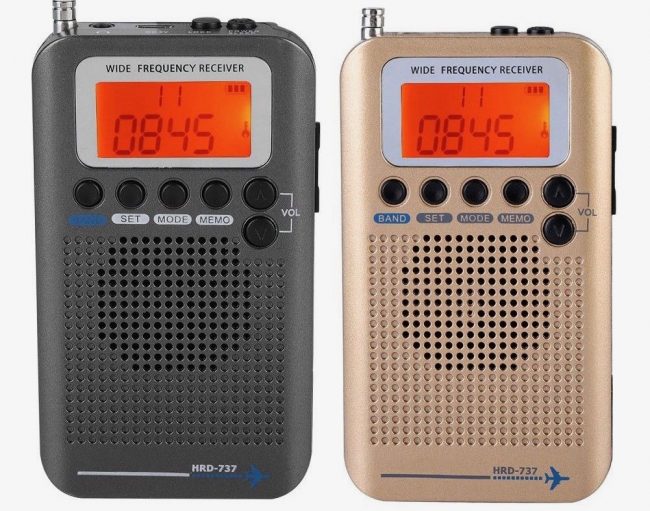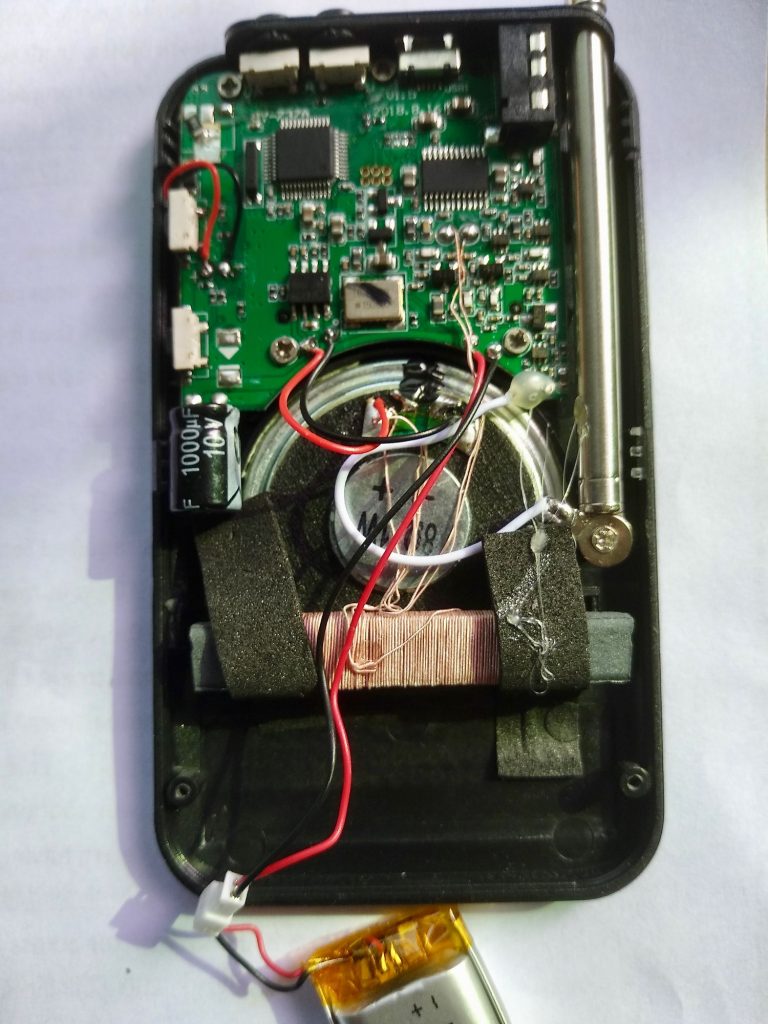Many thanks to SWLing Post contributor, Nad, who writes:
I bought an HRD-737 a few weeks ago off AliExpress. Was going to write a review but now feel there is no point because it has so many major and minor problems beyond those already reported.
Decided to take mine apart. The photo is attached.
It appears to me that the HRD-737 could be the first attempt at an SDR-based pocket sized receiver. Wondering if you or someone the experts at SWLing Post can offer any insight in this regard. Identifying marks on the ICs have been removed. The metal can in the middle could be a wideband programable oscillator of some kind?
Thank you for sharing, Nad!
Readers: can you shed some light on the HDR-737 receiver design based on this internal photo? Please comment!



I am interested to see if this information I found might help… I have V2.1 of thus radio… I managed to snap a picture of the board and it’s chips. It has an ABOV SEMICONDUCTOR 31G112CLN.
https://www.abov.co.kr/en/products/product_documentation.php?category=home_appliance_g1_series&device=A31G112CL
And, if I’m not mistaken, there’s 2 pins on that chip marked tx and rx… they seem to go directly to the usb. The other chip is an AKC6955W – AM/FM/SW/LW… ETC receiver chip. Could it be that simple??
AS I LIVE IN THE UK THIS RADIO IS NOT FOR UK IMPORT, Yes you can buy them for uk) But miss a lot of frequencies or unintelligible because of wrong steps ?
REQUIREMENTS:
NEED 12.5K – STEPS NOT 5K – STEPS FOR VHF-N.
NEED 12.5K STEPS FOR CB NOT 5K – STEPS
ALTERNATIVE SWITCHABLE STEPS 1K/5K/9K/10K/12.5K/25K/100K WOULD BE NICE.
That’s what scanners are for, they offer such configurable options as well as the ability to store channels and scan/search amongst them.
The first attempt to make a SDR based pocket radio….what are you talking about?
This is a one chip radio like all the others on the market; the other chip (the bigger one) is the microcontroller to send i2c controls to the radio ic.
The higher quality portable radios like Tecsun, Xhdata etc use Silicon Labs ic Si4734/35, the cheaper chinese brands use AKC Technology chip mostly.
Anyway, evaluating a radio must be something more than switching it on and see if it works, at least for radio enthusiasts it must go through understanding the circuit , the problems and the possible solutions.
The only thing salvageable is the loop-stick antenna ferrite rod.
Try going down to the lake or beach and try skipping it on the surface like a flat stone.
There is nothing salvageable in these new DSP radios and TV’s
If the IC numbers were readable, then it would be easy to search for datasheet, though not every company makes them readupily available.
But without that, it’s really up to people familiar with ICs used in such radios to see if familiar ICs match the
pin count. It’s not an absolute, but it’s a first level of filtering. Obvious things like ground and power pins eliminate a lot. Then make assumptions, and see if there’s a match.
One could just trace it all out, but that’s lots of work and still you’d need to figure out the ICs. But if you take limited bits of information, it’s then easier to see if potential ICs match by using a datasheet to anticipate the circuitry.
I suspect the metal can is just a fixed crystal oscillator. Unless there’s a lot more on the other side of the board, I’d guess the 8pin IC next to that crystal is an audio output amplifier. One of the big ICs must be the microcontroller, leaving the last as the actual radio IC. That one has 24pins.
The frequency range is also a clue. The familiar Silicon Lab ICs don’t do more than broadcast and shortwave. There must be ICs for FRS walkie talkies, but they won’t do am ir shortwave, while some do the weather channels st 162MHz.
That’s assuming off the shelf ICs are used.
Michael
I disassembled the Sharp DRW-V2 and it has similarities to the internal IC componentry as in your photo of the HRD-737. However, the Sharp used MCCSS instead of HDR or RDS for digital data decryption and had higher quality surface mounted components and design that included a real onboard AM discriminator. Mark, KC9TSR